Our Mission
To forge partnerships among citizens, scientists, and professionals to foster the management and protection of lakes and reservoirs for today and tomorrow.
NALMS is not focused on professionals, academic researchers, or any smaller interest group alone; rather, NALMS welcomes anyone interested in lakes.
NALMS goals are:
- To promote the exchange of information on aspects of managing lakes and their watersheds.
- To promote public awareness of lake ecosystems.
- To encourage public support for promoting management of lakes and their watersheds.
- To provide guidance to agencies involved in management activities for lakes and their watersheds.
- To boost the professional status of those engaged in managing lakes and their watersheds.
- To identify needs and encourage research on lake ecology and watershed management.
| NALMS Bylaws Amended November 19, 2020 Download NALMS Bylaws |
Policies and Procedures Manual Rev. April 2023 Download Policies and Procedures Manual |
Operations Manual Rev. April 2023 Download Operations Manual |
NALMS Strategic Plan
NALMS updated its strategic plan in 2016 to focus on the basic tenants of membership, communication, the NALMS brand and financial health for sustainable growth. Though the 2017–2020 strategic plan guided NALMS for a three-year period, it was also intended to be a living document and updated as NALMS continues to grow and excel. In addition, the plan called for a formal review in 2020 and every five years thereafter to evaluate the need for modification and updates. Given uncertainties due to the coronavirus pandemic and current events that have led to a national and international reckoning with racial justice, this update is intended to cover another three-year period (2021–2024) before a formal review in 2024 and update every three to five years thereafter.
The focus of each successive strategic plan is to build upon past successes and identify new initiatives that can assist NALMS in meeting future challenges and opportunities. The result is an updated plan detailing NALMS’ priorities and direction.
Download the 2021–2024 Strategic PlanOur History
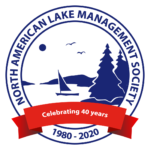 The North American Lake Management Society (NALMS) was founded in Portland, Maine in 1980 as an organization with membership open to both professionals and citizens interested in applied lake management, while other organizations focused on either one or the other. This unique niche is reflected in our mission: To forge partnerships among citizens, scientists, and professionals to foster the management and protection of lakes and reservoirs for today and tomorrow. NALMS was proud to celebrate our 40th year as an organization in 2020. Thanks to our membership, partners, volunteers, and Board of Directors, we are still going strong today!
The North American Lake Management Society (NALMS) was founded in Portland, Maine in 1980 as an organization with membership open to both professionals and citizens interested in applied lake management, while other organizations focused on either one or the other. This unique niche is reflected in our mission: To forge partnerships among citizens, scientists, and professionals to foster the management and protection of lakes and reservoirs for today and tomorrow. NALMS was proud to celebrate our 40th year as an organization in 2020. Thanks to our membership, partners, volunteers, and Board of Directors, we are still going strong today!
The organization’s first office was established in 1983 with an office sharing agreement with a consulting firm in Washington, DC that was also responsible for managing the day-to-day operations of the organization, including membership, publications and conferences.
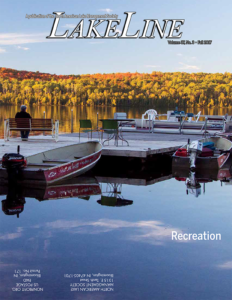
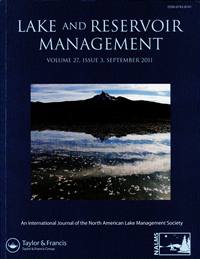 From the beginning, NALMS has published its periodical, LakeLine, first as a newsletter then in a magazine format, as well as holding an annual international symposium in locations throughout the US and Canada. The proceedings from those early conferences were published as Lake and Reservoir Management, which a few years later became a peer-reviewed research journal.
From the beginning, NALMS has published its periodical, LakeLine, first as a newsletter then in a magazine format, as well as holding an annual international symposium in locations throughout the US and Canada. The proceedings from those early conferences were published as Lake and Reservoir Management, which a few years later became a peer-reviewed research journal.
One of the primary focuses of the organization in its early years was the funding of Section 314 of the Clean Water Act, the Clean Lakes Program. The Clean Lakes Program provided funds, through the states, to clean up individual lakes. NALMS actively supported EPA funding appropriations and implementation of this program, but dedicated funding for the Clean Lakes Program ended in 1994, creating financial challenges for lake management activities.
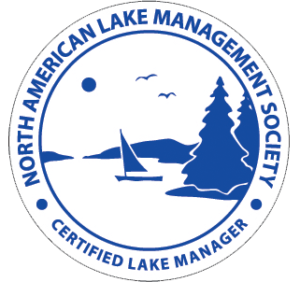 In 1989, NALMS established its certification program, which recognizes members with special training and experience in lake management. Certified Lake Managers (CLMs) are directly involved in managing lakes and reservoirs, including their watersheds, and have satisfied the NALMS requirements intended to properly perform the above duties with maximum competency. In 2003, the program was expanded to include Certified Lake Professional (CLPs) for those members who are also involved in managing lakes and reservoirs but focus on providing the critical technical or socioeconomic data used in making decisions that affect the quality and use of these water bodies.
In 1989, NALMS established its certification program, which recognizes members with special training and experience in lake management. Certified Lake Managers (CLMs) are directly involved in managing lakes and reservoirs, including their watersheds, and have satisfied the NALMS requirements intended to properly perform the above duties with maximum competency. In 2003, the program was expanded to include Certified Lake Professional (CLPs) for those members who are also involved in managing lakes and reservoirs but focus on providing the critical technical or socioeconomic data used in making decisions that affect the quality and use of these water bodies.
After a three-year presence in Alachua, Florida, the NALMS office was moved to Madison, Wisconsin in 1994. NALMS has called Madison home ever since.
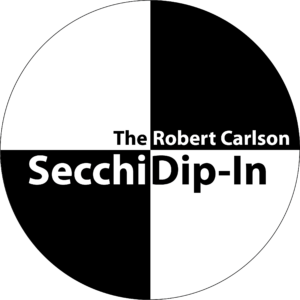 The Secchi Dip-In was founded in 1994 by Dr. Robert Carlson at Kent State University and NALMS has been a key partner of the Dip-In from the beginning. The Secchi Dip-In is a demonstration of the potential of citizen scientists to gather environmentally important information on our lakes and reservoirs. Individuals in volunteer monitoring programs take a transparency measurement of their lake or reservoir on one day during the month of July. These transparency values are used to assess the transparency of volunteer-monitored lakes in the United States and Canada. In 2015, Dr. Carlson transferred management of the Dip-In to NALMS.
The Secchi Dip-In was founded in 1994 by Dr. Robert Carlson at Kent State University and NALMS has been a key partner of the Dip-In from the beginning. The Secchi Dip-In is a demonstration of the potential of citizen scientists to gather environmentally important information on our lakes and reservoirs. Individuals in volunteer monitoring programs take a transparency measurement of their lake or reservoir on one day during the month of July. These transparency values are used to assess the transparency of volunteer-monitored lakes in the United States and Canada. In 2015, Dr. Carlson transferred management of the Dip-In to NALMS.
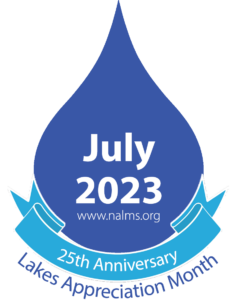 In July 1998, NALMS launched Lakes Appreciation Week to focus attention on lakes and reservoirs, their unique value as well as the management issues they face. In 2003, Lakes Appreciation Week became Lakes Appreciation Month, held each July.
In July 1998, NALMS launched Lakes Appreciation Week to focus attention on lakes and reservoirs, their unique value as well as the management issues they face. In 2003, Lakes Appreciation Week became Lakes Appreciation Month, held each July.
In 2004, NALMS launched a new publication, NALMS Notes, an electronic, bi-monthly newsletter focused on the organization’s activities and news from around the lake management world. NALMS Notes was recently renamed NALMS Notes & Lake News.
In 2004, NALMS formed an ad hoc committee on algal toxicity. The ad hoc committee eventually gave way to a new NALMS Freshwater HABs (harmful algal blooms) program. In 2018, the program is developing a website with educational materials on the topic and is drafting a strategic plan to guide future efforts to share information on freshwater HABs with NALMS members and the public.
In 2006, NALMS expanded its partnership with the National Water Quality Monitoring Council, a scientific advisory committee to federal agencies. NALMS facilitates the Council’s biennial conference and has a representative on the Council’s parent organization, the Advisory Committee on Water Information (ACWI). NALMS also maintains partnerships with the Consortium of Aquatic Science Societies, the Source Water Collaborative, the Reservoir Fisheries Habitat Partnership, and the Aquatic Plant Management Society.
Students play an important role in NALMS’ future, and we have made several efforts in recent years to nurture the next generation of lake management professionals. In 2010, NALMS amended its bylaws to create a Student At-Large position on its Board of Directors. In 2011, the Eberhardt Memorial Student Fund was established to support NALMS’ student programs. In 2012, a student mentorship program was launched. 2016 saw the launch of a student video series, which encourages student members of NALMS to create educational videos on the basics of lake management and the use and construction of limnological equipment.
